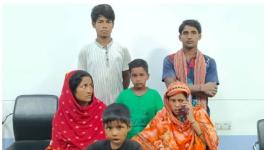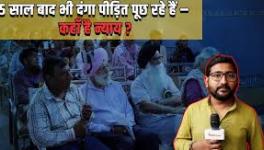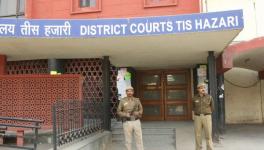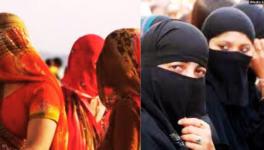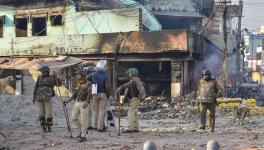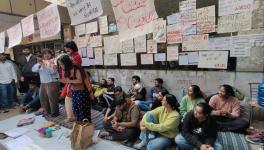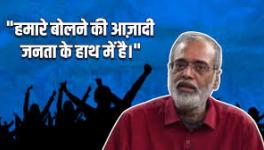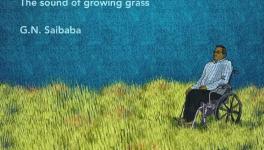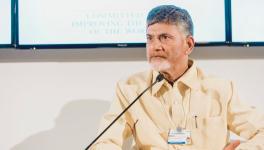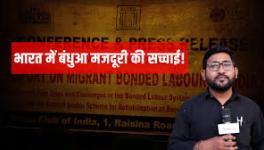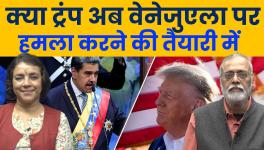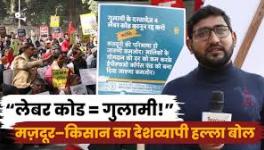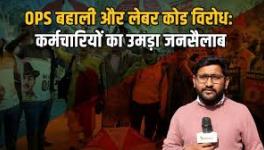What the ‘Outsider’ Discourse on the Anti-CAA Movement Hides
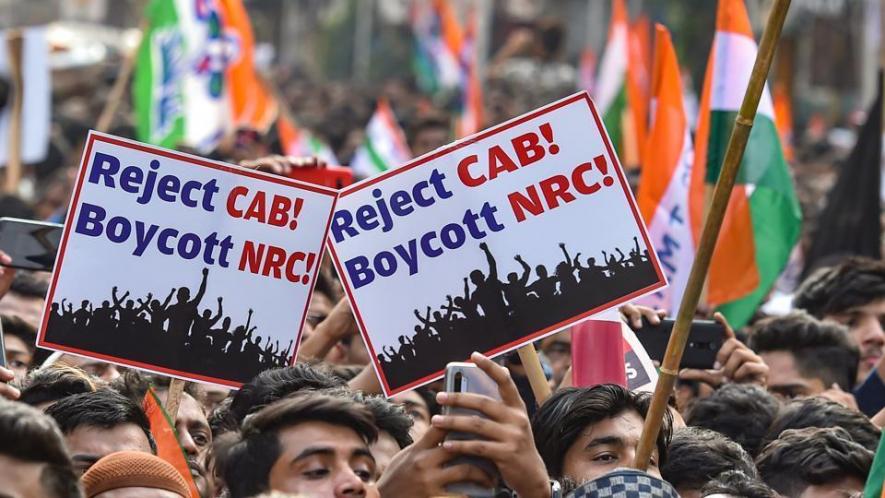
Image Courtesy: Hindustan Times
The Delhi Police investigation into the Delhi pogrom appears to draw a causal link between the protests against the Citizenship Amendment Act (CAA), National Register of Citizens (NRC), and the associated National Population Register (NPR), and the deadly violence of February. Much ink has been spilt questioning this causality and asserting the democratic right to protest. Less has been said about another claim: the role of “outsiders” in hatching the so-called “riot conspiracy”.
Recently, the Special Branch interrogated Delhi University’s (DU) Prof Apoorvanand for allegedly instigating the violence. This turned into a full-scale media trial, labeling him as the “mastermind” behind the Delhi “riot conspiracy”. Before him, Pinjra Tod activists Devangana Kalita and Natasha Narwal were arrested under allegations of unlawful assembly, attempt to murder, instigating the riots and planning the “conspiracy”. Alongside, a local protest leader and community organiser from Seelampur, Gulfisha Fatima, has been charged under the draconian Unlawful Activities Prevention Act (UAPA), for allegedly “executing” the so-called conspiracy.
Though the Delhi Police is yet to produce credible evidence to prove any of these charges, with the help of sections of the media, it has successfully produced a narrative about these “outsiders” egging on Muslim women to organise sit-ins.
The “outsider” discourse:
This narrative has found a ready audience, and not only because Muslim women’s agency troubles our imagination. In fact, the idea of the questionable “outsider” is hard-wired into our brains. When teenage daughters challenge patriarchal authority, the blame is often put on the “bad influence” of friends—outsiders to the family. When hundreds of women of colleges around the country protested hostel curfews or high prices of food in their canteen, different administrations appeared convinced about the evil influence of outsiders. And Pakistan—the eternal outsider—haunts our nation’s imagination on TV news and is credited with creating the enemy within, the dissenting “anti-nationals”.
In each instance, this discourse of the outsider dismisses all dissent as necessarily externally produced, if not unreal. It also makes it easy to disregard the actual issues that are provoking dissent—in this case, Muslim women’s claim that the new citizenship law compromises the secular fabric of the Indian Constitution.
Moreover, this aggressive imposition of the “outsider” discourse makes us forget countless instances of social movements unsettling the binary between the “insider” and the “outsider”. Anti-dowry agitations, for example, involved the participation of women from outside the family of the victim in protesting what used to be covered-up before as a “family matter”. The struggle to decriminalise homosexuality was fought not only by LGBT groups but also by activists working for public health, and women’s and children’s rights, among others. Trade unions routinely give voice to workers’ grievances and advocate for their rights, but many union leaders are not workers themselves. Led by Black activists, the Black Lives Matter movement in the United States also has participation from other communities of colour and white people, prompting a conversation on turning performative ally-ship into solidarity.
The anti-CAA movement:
The anti-CAA/NRC/NPR movement also witnessed participation from “outsiders”. This must be understood in the context of the consolidation of Hindu nationalism and the unprecedented recent attacks on the Muslim community, which has been marginalised in parliamentary politics. This has limited the ability of Muslim leadership in mainstream politics to mount an effective defence and address the community’s desire to craft a new vocabulary of resistance. It is these circumstances and aspirations that led Muslim women to welcome the support of different organisations and sustain a long dharna, even in the face of vilification and violence.
They found a pool of politically active citizens—products of anti-caste and student movements of the recent past—who were also looking to resist Hindutva. Many of them participated in the protests alongside the Bhim Army, Jamia Coordination Committee, Pinjra Tod, and All India Students Association, among others. With these joined ordinary students and youth who felt disaffected with the government, for issues ranging from its sectarian manoeuvrers to rising unemployment.
Dismissing this movement as a “conspiracy” hatched by “outsiders” misrepresents the nature of the new solidarities that were being forged. Hindutva’s gender politics tries to appear feminist when demanding the criminalisation of triple talaq or imposing a Uniform Civil Code, but it cares little for the lives and aspirations of women, whether Hindu or Muslim. The struggle to resist this politics led women to explore feminist organising and to think carefully about the pros and cons of connecting with civil society groups who are usually from privileged social locations and Savarna backgrounds.
Likewise, the presence of students and professors in North East Delhi was another such example of an emerging solidarity. While Indian students have a history of participation in movements beyond universities—the struggle against the Emergency among its celebrated instances—the current involvement of students beyond educational spaces is rooted in recent structural transformations of the public university. Rapid moves towards privatisation and pushback on social justice have animated university politics in recent times. Left, Dalit, queer, and feminist groups have fiercely debated the meanings of social justice and the means to achieve it. They have argued on issues of representation in universities and in movements. In such contestations, the public university is not distanced from its social contexts, but deeply embedded in it. Thus, exploring political possibilities beyond universities is unsurprising for people from this milieu. Moreover, in the face of persistent efforts to force universities to become like corporate bureaucracies, such efforts enliven students and teachers as engaged, conscious citizens.
Nurturing new solidarities amid tensions:
The coming together of people from diverse social locations with very different relationships to the dominant power structure and attempt to build shared spaces is likely to create tensions. Questions of who takes decisions, who grabs the limelight, whose efforts go unnoticed, who takes greater risks, and who has relative immunity from harm are bound to shape the messy politics of sharing a movement. The relationships forged in the context of the anti-CAA/NRC/NPR movement did not escape this messiness either. Nevertheless, they offered the hope of shaping an alternative political imagination that could counter Hindutva—when established political parties are failing miserably at this task.
The emerging solidarities that the “outsider” discourse looks to sabotage are important and worth nurturing. If these alliances fail to survive, everyone loses, not just those who have been cast in the role of “outsiders”. And the biggest losers will be the young Indians who are searching for ways of meeting the challenges of democratic politics today.
Akash Bhattacharya recently completed his PhD from Jawaharlal Nehru University. Kriti Budhiraja is a PhD scholar at the University of Minnesota. The views are personal.
Get the latest reports & analysis with people's perspective on Protests, movements & deep analytical videos, discussions of the current affairs in your Telegram app. Subscribe to NewsClick's Telegram channel & get Real-Time updates on stories, as they get published on our website.









